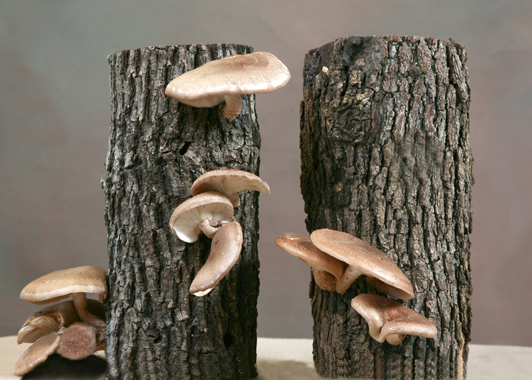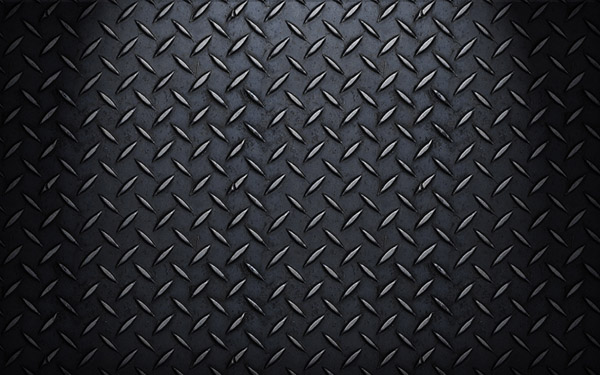With The Price’s Rising on High End Culinary Mushroom’s You Can Grow Your Own Check Out Lost Creek Mushroom Farm
With The Price’s Rising on High End Culinary Mushroom’s You Can Grow Your Own
Check Out Lost Creek Mushroom Farm

| Our original log kit. The log is 14-15 inches long .They grow in room light and room temperature and will produce every two months for about four years. Immersing the log in cold water and then soaking it for 24 hours “shocks” it and triggers the fruiting cycle. Mushrooms sprout in 6-10 days, yielding 1/4 – 1/3 pound or more. Then the log “rests” until the next fruiting, requiring soaking every two weeks in nonchlorinated room-temperature water.
Original kit logs come with their own trays for soaking, fruiting and resting. The kit includes instructions and an 8-recipe booklet. The logs are guaranteed to fruit. |

| The single log is 12″ long but does not have a tray included. An economical way to start growing your own shiitake mushrooms or give as a gift. |

The single log is 9-10″ long but does not have a tray included. An economical way to start growing your own shiitake mushrooms or give as a gift. |

The “Ma and Pa Shiitake Log Kit” is a new kind of grow-your-own mushroom kit with two logs instead of one. an idea inspired by the social nature of shiitakes themselves: We noticed that our shiitake logs seem to produce more mushrooms when they’re near other logs. With two logs you can alternate the fruiting cycles and get shiitakes every month instead of the usual two months, as with a single log.Ma and Pa Shiitake Log Kits are all-natural, hardwood logs, both 9-10 inches long, with instructions, and recipes. These logs are easy to handle and care for and are guaranteed to produce. They can be kept anywhere in the home in regular light. They are a cute couple and a natural conversation piece. The Ma and Pa Kit can produce shiitakes monthly for up to four years. |

| A ‘Shroomies is a 5-6 inch Shiitake Mushroom Log. ‘Shroomies are the same logs as our full-size kits: Their care and fruiting are the same. They can be soaked in a bowl and shocked in the refrigerator.
Note: ‘Shroomies are not covered by our guarantee because of the cost of shipping and handling. For a unique, long-lasting gift, send a Shiitake Gift Box. Each one is packed with delicious and healthful Redbud Gourmet soups and dips, organic log-grown shiitakes, and a ‘Shroomie that will grow gourmet mushrooms for years! |
Lost Creek Mushroom Farm Owners
Doug and Sondra Williams
Doug is a man who thrives at the foundation levels of life. By trade he is a stone mason, working with earth, minerals, and stone. He started hunting wild mushrooms when he was in his 20s, and eventually he joined a mycological society and learned how to identify different species and find them each season.
 He had a dream: To grow something in a greenhouse, something that helps people, is not harmful to the environment, and requires a low level of technology. But he didn’t know what that something was.
He had a dream: To grow something in a greenhouse, something that helps people, is not harmful to the environment, and requires a low level of technology. But he didn’t know what that something was.
One spring he gave wild morel mushrooms to our neighbor Dorothy, who was a master gardener. She gave him an upscale gardening magazine with an article about growing shiitakes in your backyard for fun and profit, written by Paul Goland, considered by many to be The Father of Shiitake in the US.
“My mind lit up like a Christmas tree,” Doug says. He ordered two bags of spawn from Paul, cut forty small logs from our acreage, and we inoculated them in our kitchen. Using a carpenter’s drill, each log took forty minutes: drill the holes, put in the spawn, and seal the holes with wax. That was 1986.
We tried several ‘easier’ inoculation methods, but always came back to this tried and true way. We bought a shiitake drill and inoculation tools and put up two large greenhouses. Now we can drill and inoculate a log in about five minutes. (there are drilling machines that drill a log in less than a minute – to high tech for us!) Our farm went from 40 logs to 200, to 2,000. At our peak we had 6,000 logs in greenhouses and growing outside under trees and shade cloth.
We were full-fledged fungus farmers. Doug was a natural – his shiitakes were so beautiful that our chefs said over and over, “I’ve never seen shiitakes like this.” We developed our log kit to share the experience with other people and support our farm in the winter months.
Meeting other mushroom lovers and other shiitake growers has been one of the greatest joys. They are some of the nicest people we have ever known. We’ve loved meeting fungiphiles, people who love mushrooms, at craft or home and garden shows where we sold our logs. We’ve heard amazing stories about mushroom hunting and learned new ways to cook our favorite food. We met people who lost loved ones to poison mushrooms and people who have been cured by the healing power of mushrooms.
People like to watch things grow and to give them that opportunity, especially with something that’s good for you and good to the environment … that’s a good thing to be doing.

Shiitakes are a decomposing fungus native to China and other parts of Asia. The Japanese syllable Shii refers to the type of host tree, no one is sure, perhaps oak or a tree in the same family as birch in America. Take means the fruit of the mushroom. Shiitakes are more like animals than plants. They have behaviors and we believe they’re social. They like Doug, they dislike crabby people and negative emotional environments (as plants can wilt when their owners argue). They’re not fond of cigarette smoke and may balk in their fruiting around smokers. Some growers swear their shiitakes like classical music and rock and roll. Shiitake logs fruit more generously when they are with another log or in a group of logs. They love the negative ions from rain and they respond to thunder and lightning. Some growers use flashing lights, play thunderstorm music to simulate storms and tap their logs with hammers or drop them a foot or more to simulate the fall of the log in the wild.
We toured the eastern US visiting shiitake farms and learned – there is no Right Way to grow shiitakes. Each grower had a different system, and we saw new methods of inoculation. It didn’t make any difference – everyone was getting shiitakes, on 2,000 logs or 100,000 logs, using compressor-cooled soaking tanks and fork lifts, lawn sprinklers or overhead sprayers, even garden hoses with punched-in holes. We saw home-made greenhouses, converted hog farms and chicken houses, elaborate indoor operations and thousands of logs cultivated bare naked outdoors, shaded by trees.
DO SHIITAKES GROW WILD? Not in the US, although they will spread from our outdoor logs into firewood, but yielding only a ‘shroom or two. They’re native to Asia.
In a natural forest, shiitake spores are released from fruiting mushrooms in spring or autumn. They float through the air, traveling long distances and settle in a silvery dust on live tree limbs and fallen limbs. The immune system of a live tree will overcome the shiitake spores, but on a dead limb, they take hold and work their way into the cambium layer. They colonize that section of wood, devouring cellulose and building a network throughout the dead part of the tree. The next year, a storm comes, breaks the limb and it crashes to the ground, startling the shiitake awake. With rain and temperatures in the 70s during the day and in the 50s at night, five or six shiitakes may “bloom” on the log. Today, as in ancient China, pickers come by the hundreds. The Chinese only eat shiitake dried. The same process is now operating in the eastern US, where Korean producers lease forested lands for shade to protect thousands of logs and harvest in spring and fall.
HISTORY OF SHIITAKE CULTIVATION. In the 1930s the Japanese developed a cultivation method using saw cuts, and eventually developed the methods we use now, drilling holes in cut wood, inoculating with shiitake spawn, incubating the logs until they are colonized, then harvesting during the spring and autumn rainy seasons.
Shiitake cultivation was kept out of the US because the edible and medicinal Lentinula edodes was confused with another strain of Lentinula, a fungus that attacks railroad ties. Finally in the 1970s, it was all straightened out, and Americans started cultivating shiitakes and growing them bigger, faster, and better.
A new, faster, easier method of production involved inoculating sterilized sawdust blocks. It’s popular with commercial growers because they can grow many times the amount of shiitakes in the same time it takes to grow on logs and increase their profits tenfold and more. Asian growers jumped in with both feet. But the mushrooms weren’t as meaty, tasty, and as it turned out, not as supportive to optimal health. In Asia, sawdust-grown shiitakes sell for $2-$3 a pound, log-grown shiitakes for $40-80 a pound. Most Americans, and many chefs, don’t know the difference until they see, handle, and taste shiitakes grown on logs.
Donko shiitakes, mushrooms that dry out faster on the surface than on the inside, have white slits, or splits, in the dark brown caps. Asians consider donko shiitake to be a powerful aphrodisiac.
Early Folklore
For centuries the Chinese picked shiitakes wild and dried them. The Japanese learned to cultivate them. They placed fresh mushrooms on a dead log and let it self-inoculate. We heard the story that in olden days in Japan, there were shiitake wars to plunder and steal inoculated logs. We heard that it used to be the custom, when a boy child was born, to inoculate a 20-foot long log, about 4 feet in diameter. It took around 20 years for that log to colonize. So when the boy turned 21, and ready to seek his fortune in the world, his fortune awaited him in his back yard. This may be folklore, as we’ve found no historical proof.
Shiitake ~ the Mushroom of Love
While the healing power of shiitakes is well documented and ongoing, especially for applications in cancer treatment, the aphrodisiac power of shiitakes is a matter of ages-old legend. “Donko” shiitake are believed to be a powerful aphrodisiac. A “donko” shiitake has white streak marks on the cap where the skin has dried, but the body of the mushroom has continued to expand, splitting the skin. The splits and streaks create beautiful designs on the caps. Where even sawdust-grown shiitakes may sell for $20 a pound or more in the US and log-grown shiitakes sell for $40 a pound and up in Asia, “donkos” may sell for $40 a pound in the US and $80-$100 or more in the Orient.








